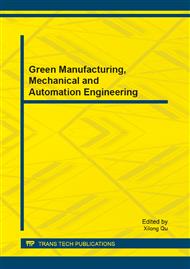[1]
Benndorf, J. Ü., Böing, W., Koop, J., & Neubauer, I. (2002). Top‐down control of phytoplankton: the role of time scale, lake depth and trophic state. Freshwater Biology, 47(12), 2282-2295.
DOI: 10.1046/j.1365-2427.2002.00989.x
Google Scholar
[2]
Bossuyt, B. T. A., & Janssen, C. R. (2005). Copper regulation and homeostasis of Daphnia magna and Pseudokirchneriella subcapitata : influence of acclimation. Environmental Pollution, 136(1), 135-144.
DOI: 10.1016/j.envpol.2004.11.024
Google Scholar
[3]
Bowen, S. (1982). Feeding, digestion and growth [of Tilapia] qualitative considerations. Brussaard, C. P. D. (2004). Viral Control of Phytoplankton Populations—a Review1. Journal of Eukaryotic Microbiology, 51(2), 125-138.
DOI: 10.1111/j.1550-7408.2004.tb00537.x
Google Scholar
[4]
Donk, E. V., & Bund, W. J. V. D. (2002). Impact of submerged macrophytes including charophytes on phyto- and zooplankton communities—allelopathy versus other mechanisms. Aquatic Botany, 72, 261-274.
DOI: 10.1016/s0304-3770(01)00205-4
Google Scholar
[5]
Drenner, R., & Hambright, K. (1999). Biomanipulation of fish assemblages as a lake restoration technique. Archiv Fur Hydrobiologie, 146(2), 129-165.
DOI: 10.1127/archiv-hydrobiol/146/1999/129
Google Scholar
[6]
Gross, A., & Boyd, C. E. (1998). A digestion procedure for the simultaneous determiation of total nitrogen and total phosphorus in pond water. Journal of the world aquaculture society, 29(3), 300-303.
DOI: 10.1111/j.1749-7345.1998.tb00650.x
Google Scholar
[7]
Gross, E. M. (2003). Allelopathy of Aquatic Autotrophs. Critical Reviews in Plant Sciences, 22(3-4), 313-339. doi: 10. 1080/713610859.
DOI: 10.1080/713610859
Google Scholar
[8]
Gross, E. M., & Sütfeld, R. (1994). Polyphenols with algicidal activity in the submerged macrophyte Myriophyllum Spicatum L. Acta Horticultura, 381, 710-716.
DOI: 10.17660/actahortic.1994.381.103
Google Scholar
[9]
Hosper, H. (1997). Clearing lakes: An ecosystem approach to the restoration and management of shallow lakes in the Netherlands: Landbouwuniversiteit Wageningen.
Google Scholar
[10]
Liu, J. (1999). Advanced Hydrobiology. Beijing: Science Press.
Google Scholar
[11]
Lovejoy, C., Bowman, J. P., & Hallegraeff, G. M. (1998).
Google Scholar
[12]
Matveev, V., Matveeva, L., & Jones, G. J. (1994).
Google Scholar
[13]
Mayali, X., & Azam, F. (2004). Algicidal Bacteria in the Sea and their Impact on Algal Blooms1. Journal of Eukaryotic Microbiology, 51(2), 139-144.
DOI: 10.1111/j.1550-7408.2004.tb00538.x
Google Scholar
[14]
Mehner, T., Benndorf, J., Kasprzak, P., & Koschel, R. (2002). Biomanipulation of lake ecosystems: successful applications and expanding complexity in the underlying science. Freshwater Biology, 47(12), 2453-2465.
DOI: 10.1046/j.1365-2427.2002.01003.x
Google Scholar
[15]
Mulderij, G., Smolders, A. J. P., & Van Donk, E. (2006). Allelopathic effect of the aquatic macrophyte, Stratiotes aloides, on natural phytoplankton. Freshwater Biology, 51(3), 554-561. doi: 10. 1111/j. 1365-2427. 2006. 01510. x.
DOI: 10.1111/j.1365-2427.2006.01510.x
Google Scholar


